Are you wondering how to gain market share in retail and build a successful retail empire? Continue reading “Market share 101: How to gain market share in retail”
Category: Marketing
4 examples of effective customer loyalty rewards programs
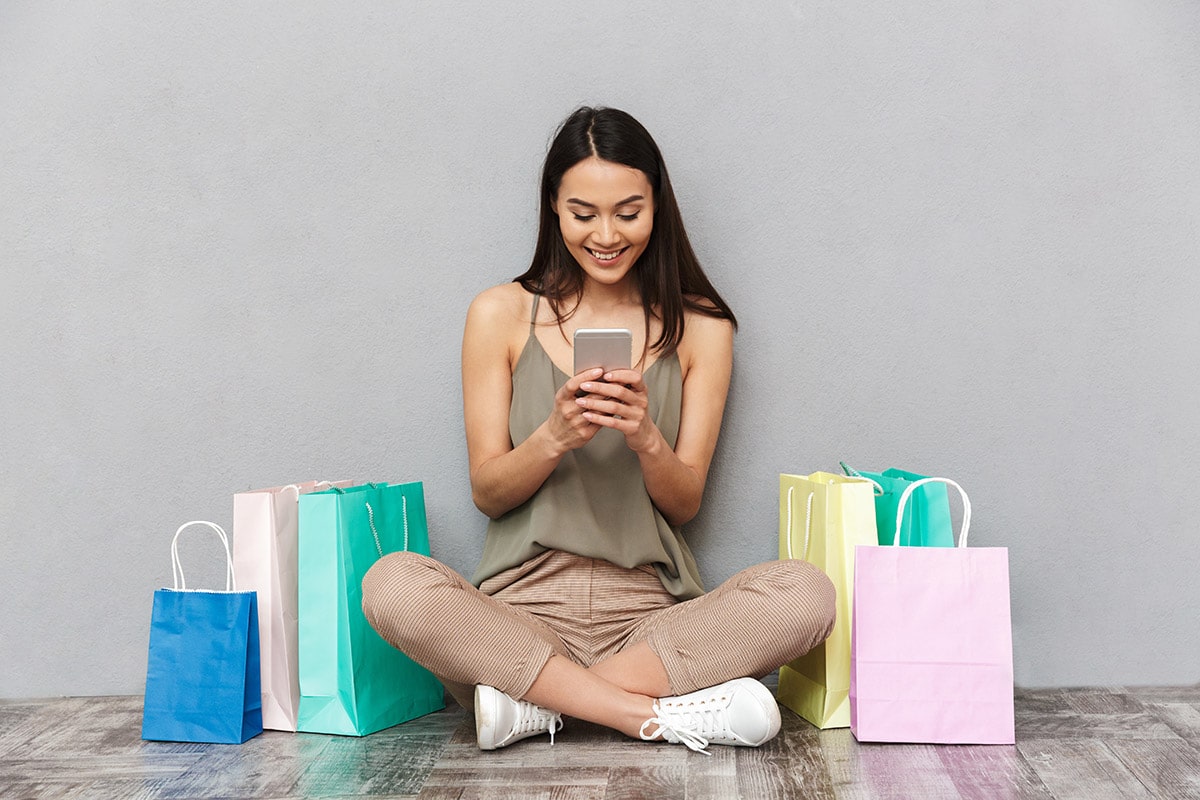
While many businesses tend to focus on new customer acquisition, it’s the loyal, repeat customers who represent long-term profitability. One effective method of retaining customer loyalty is through comprehensive customer loyalty rewards programs. A study by Bond found that 79% of customers agreed that loyalty programs make them more likely to continue doing business with a brand. The study goes on to say that 73% of consumers are more likely to recommend brands with satisfactory loyalty programs, and 71% of consumers find loyalty programs to be a meaningful part of the customer-brand relationship.
The best loyalty programs are those which help companies stay consistently engaged with their customers across multiple retail channels. That is why mobile loyalty programs have been found to be the most popular and effective way to interact with customers. Nearly 75% of shoppers say they would show more engagement with their loyalty programs if they could access them via their mobile devices.
A smartphone app is accessible on-the-go, limits the number of physical cards or coupons a shopper has to carry, and offers a personalized experience. Relevant mobile data can be collected and analyzed by companies to gain valuable insight into buyer behavior, stored in a customer relationship management database, and later used to create highly optimized marketing campaigns.
Below are four key examples of today’s top brands and retailers effectively creating and managing profitable customer loyalty rewards programs.
The app also features AI technology which enables users to give themselves virtual makeovers using selected products, as well as access customized recommendations that match each of their beauty types.
- Over 17 million people have downloaded Sephora’s app
- Loyalty members make up 80% of annual sales
- App improvements boosted eCommerce sales 150%
Kraft® partnered with Shopkick, a popular third-party mobile rewards platform, to boost baking product sales at Walmart locations during the busy holiday season.
Their campaign started with pre-shop branded content that included recipes with the three featured products— Baker’s Chocolate, JET-PUFFED Marshmallows, and Jell-O Instant Chocolate Pudding. Introducing the products before consumers visited the store helped boost purchase consideration, and rewarding shoppers for their at-home engagement built a positive brand-affinity pre-shop. Once consumers were in-store, Shopkick guided them to Kraft’s featured products at-shelf, and provided reward points (“kicks”) for those who scanned the select items’ barcodes, or for making a purchase. They also offered bonus kicks for those who purchased all three products.
Rewarding shoppers for their engagement and purchases builds positive brand affinity, boosts future purchase intent and loyalty, and increases the likelihood of them purchasing from your brand over a competitor.
The campaign resulted in:
- Over 9 million in-store product engagements nationwide
- More than 18 million total campaign impressions
- 27% of scanners converted to purchase
- 55% of purchases were unplanned
- Greater than 7:1 ROI
For top retailers like Best Buy and TJ Maxx, shopBeacon™ technology is an innovative tool that allows large crowds of consumers to each have a personal shopping experience. Beacons welcome each shopper by name and reward them immediately upon entering a partnering retailer. This creates a positive brand affinity early on in the shopping journey, and inspires consumers to keep shopping for additional kicks in-store. This tool links in-store activity with at-home browsing data, filling gaps in the customer shopping journey for our partners.
By eliminating manual check-in, Shopkick makes it easy for consumers to participate in their loyalty program and earn points. Plus, the lack of GPS tracking data helps retailers avoid privacy issues.
Kicks
Brands and retailers who partner with Shopkick can offer rewards for customer loyalty that don’t involve discounts, coupons, or price cuts.
Shopkickers earn kicks (points) by actively engaging with partners in a variety of ways:
- Walking into select retail locations
- Scanning the barcodes of select items in-store
- Going on “treasure hunts” for featured items in-store
- Watching branded videos
- Browsing curated lookbooks
- Purchasing promoted products
- Linking a credit card and shopping online or in-store
- Inviting friends to use the app
App users accrue kicks toward gift cards of their choosing. Many Shopkickers earn one or more gift cards every month simply for shopping and engaging with Shopkick partners. Retailers and brands that offer gift cards in the Shopkick rewards store find very profitable returns, as most people typically spend more than the gift cards are worth.
Videos
Videos have been one of the main driving forces behind Shopkick partners’ success. Shopkick’s Discover Tab features short, campaign-exclusive promotional spots, allowing partners to make a quick yet memorable impact with video. Plus, time-strapped shoppers appreciate these visual, to-the-point clips.
Video marketing dominates in 2020, and is expected to continue to reign:
- 92% of firms deem video important
- Viewers watch approximately 100 min. of video daily
- 95% of video budgets will increase
Consumers largely prefer video to text marketing, with 72% of shoppers saying video is a “convenient and effective” way to learn about products of interest.
Most of Shopkick’s campaigns see viewing completion rates of 99% or higher!
Nike+
Nike loyalty program members are treated to exceptional perks like free expedited shipping, reward redemption for in-store merchandise, birthday discounts, surprise gifts at checkout, and exclusive product access.
Nike+ members also receive rewards for staying active. Partnerships with Apple, Headspace, and ClassPass—offering the added value of music, guided meditation, and guided workouts—make it easier to reach fitness goals.
- Nike+ boasts 185 million members
- Loyalty app users spend 3x as much as non-members
- Digital business has grown 38% in the past few years
- ECommerce surpassed $10 billion in Q3 2019
Sprint/Amazon Moment
Amazon ventured into the B2C mobile rewards sphere in 2019 with a new program called Amazon Moments, an intuitive, cross-platform applications programming interface (API).
With a Moments marketing campaign, companies set desired actions for consumers to perform that generate specific rewards. Amazon then tracks user engagement and completed actions, and automatically fulfills the rewards. Business partners pay a cost per action (CPA) fee.
Sprint partnered with Amazon Moments for a five-week campaign during the 2019 Concacaf Gold Cup. Customers downloaded the Fútbol Mode Rewards Wallet Pass to complete challenges during each of the five stages of the tournament and accumulated Amazon credits that could be redeemed for over 500,000 choice items. Additional points could be earned by referring friends to the app and uploading videos of themselves engaging with Sprint. Rewards included TAG Heuer watches, Samsung electronics, and Nike soccer gear.
Throughout the different stages of the campaign, Sprint saw:
- A 3x increase in engagement
- 74% challenge completion and reward redemption rate
- 26K influx in website visitors
Partner with Shopkick to create an effective customer loyalty rewards program that will deliver an increase in brand awareness and ROI, as well as long-term trust and brand affinity. Read how leading brands like Claritin, Tyson, and Purina benefitted from a partnership with Shopkick or get started on your very own campaign by contacting us today!
A new normal: Preparing for changes in consumer behavior post-COVID-19

Consumption habits have been deeply disrupted by the emergence of COVID-19, leaving shoppers and retailers with much uncertainty about the path ahead. Continue reading “A new normal: Preparing for changes in consumer behavior post-COVID-19”
Mobile: The most effective in-store marketing channel
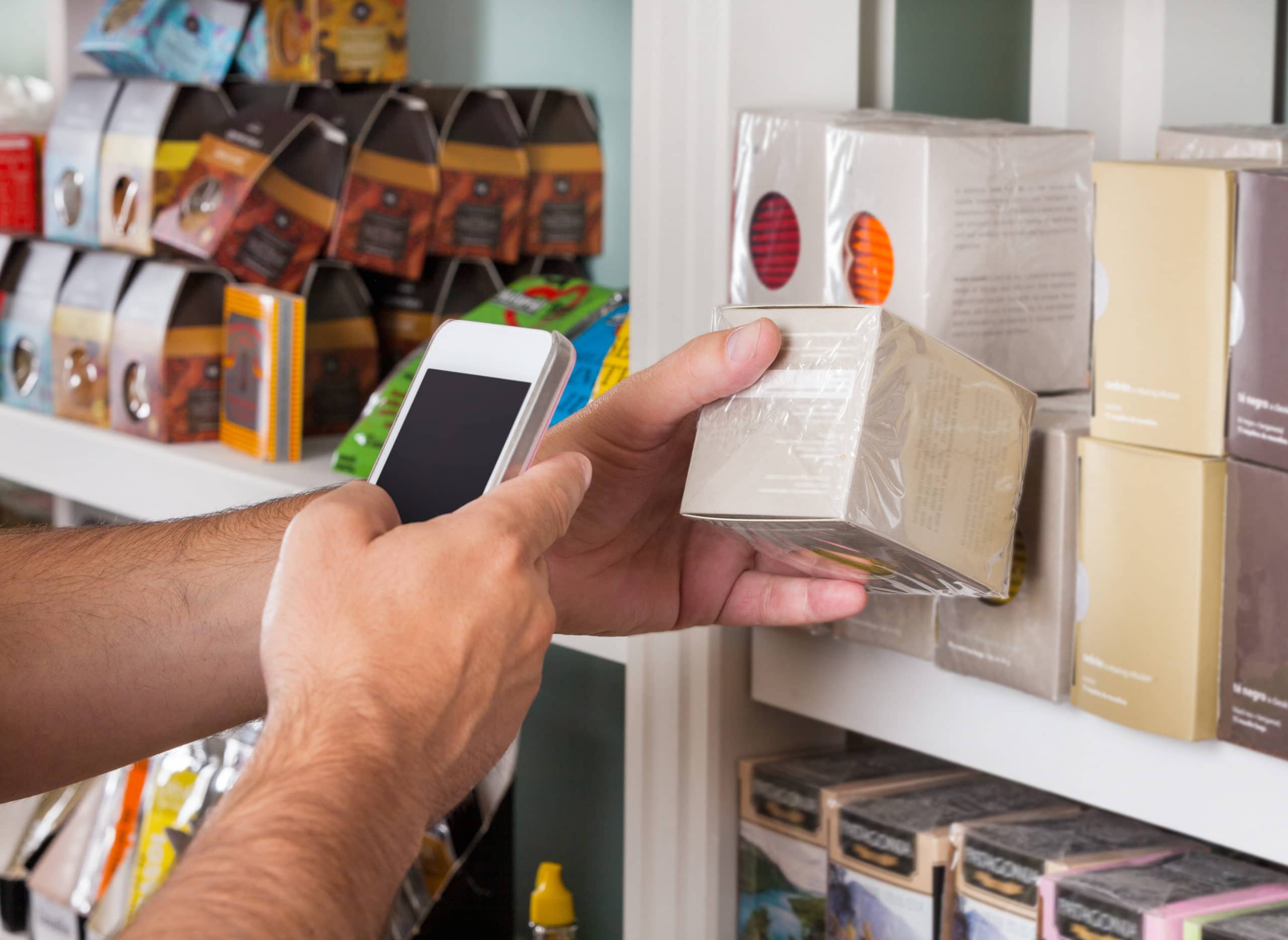
In-store marketing is relatively affordable when compared to other forms of advertising like billboard ads and TV spots. Continue reading “Mobile: The most effective in-store marketing channel”
3 CPG digital marketing trends changing how brands reach consumers

3 CPG digital marketing trends changing how brands reach consumers
Technology has made it easier and more convenient to shop, which is something brands can capitalize on when trying to reach new and existing consumers. As we’re halfway through 2020, this year’s prevailing trends indicate the lines between online and offline shopping have blurred. It’s not an “either/or” proposition, but rather a combination of the two. The brands that understand current trends and how to harmoniously integrate different channels will be the leaders.
Below, we’ll discuss CPG digital marketing trends like micro-influencers, ephemeral video, and third-party mobile shopping apps, along with some of the offline trends—like direct-to-consumer and same-day delivery—and how they intersect with the digital marketing landscape. No matter which combination of trends you implement as part of your marketing mix, the goal is to provide a seamless omni-channel experience that delivers the convenience, personalization, and quality customers have come to expect.
Direct-to-Consumer Subscriptions
Direct-to-Consumer (DTC) brands are products, services, and experiences designed, produced, marketed, and sold by the same company, bypassing the retail channel. More than 40% of brands sell DTC in some capacity. The industry is growing year-over-year, expected to reach $130 billion by 2025.
Consumers flock to DTC models for a myriad of reasons. Some customers prize convenience and cost savings, while others appreciate the personalization and discovery aspects. DTC offerings cut out the time and hassle of browsing through retail stores, and generally boast exceptional customer service. Many models incorporate “VIP” services and provide exclusive access to rewards.
- Pay-Per-Result Marketing: Just as DTC strategies hinge upon quantifiable marketing, digital marketing relies upon securing a return on investment (ROI). The DTC method of performance marketing—paying only when a specific result is achieved—has inspired digital marketers to look at free trials, coupon codes, first-month discounts, and rewarded in-app content as ways of getting a shopper’s foot in the door.
- Subscription Services: DTC’s focus is not on the short-term sale, but on delivering continuous value. Likewise, digital advertisers for CPG brands are considering how to create and encourage direct subscription services that generate long-term sales. Though the DTC model has struggled with scale and profitability, the wildfire success of Nike, Disney, and Kellogg’s forays into DTC has many CPG brands taking a deeper look at the model.
- Personalization: Lastly, shoppers delight in the personalization available with DTC brands. CPG brands would be wise to emphasize similar options on their websites and email correspondences. By using quizzes, custom gamified experiences, and augmented reality (AR), brands are able to tailor their offerings and messages directly to the individual.
Omni-Channel Experiences
Marketers used to fret that “retail is dead,” and that eCommerce would take over the world. We now know that’s simply not true.
Although online sales increased another 17.9% from 2018 to 2019, shoppers still enjoy in-store experiences. They love to touch and feel items in person, get out of the house, talk to store associates, and experience the instant gratification of purchasing a product and having it immediately available for use.
Nevertheless, blurring the line between in-store and digital retail is an increasingly important trend. Social commerce and digital ad spend are still being budgeted for, but CPG executives are also investing in new tools like Instagram Shopping posts, mobile apps, artificial intelligence (AI), and AR tech in physical store locations, as well as automated or mobile checkout to remain aligned with future trends.
Specifically for digital strategies, an emphasis has been placed upon micro-influencers, ephemeral videos, and third-party mobile shopping apps to deliver experiences customers want at home and in-store.
Micro-Influencers
Years of high-profile scandals, frauds, and fakes has brought the macro-influencer industry to its knees.
Only 4% of people trust what paid social media influencers say. A study by Stackla found that people are 9.8x more likely to make a purchase based on a social media friend’ recommendation, rather than a high-profile influencer. As it turns out, real people have real influence.
There are a number of ways CPG brands are engaging micro-influencers. They’re monitoring hashtags, responding to mentions, and using new tools to find, engage, and reward organic advocates and unofficial ambassadors. Some strategies include:
- Running inspirational contests and giveaways.
- Giving out promotional items and goods like free swag.
- Offering VIP experiences.
- Inviting members to join their communities.
It may not be as simple as paying a celebrity with millions of followers for a promotion, but the micro-influencer pitch works wonders for increasing authenticity and trust.
Ephemeral Videos
Content is diversifying in new ways. Long-lasting “evergreen” content used to be the standard, but now consumers have demonstrated a demand for short, fresh, relevant videos.
The word “ephemeral” is an eloquent way of saying “short-lived.” Think Instagram Stories, Snapchat, or TikTok videos, for instance. Engaging visual clips that appear today, but are gone tomorrow, create a sense of urgency and FOMO (Fear Of Missing Out).
With over 500 million active users in 2019, TikTok is a popular platform (particularly for Gen Z) that attracted CPG brands like Kind, Red Bull, Kool-Aid, Pepsi, and Lay’s.
CPG brands can use these platforms in a more casual, interactive way. They might offer a behind-the-scenes glimpse of the company, ask a live poll, countdown to an upcoming event, or create a contest.
Third-Party Mobile Apps
With 85% of customers using smartphones while shopping in-store, we can safely assume apps are now a staple element in the path to purchase.
Third-party shopping apps are an easy, accessible, and affordable foray into this burgeoning market. Instead of developing a constant stream of app content, brands only need to create campaigns, which they can test, alter, and change as they please.
Through Shopkick, clients’ campaigns have delivered noticeable ROI and increases in brand favorability thus far.
For instance, when Claritin partnered with Shopkick, they achieved a 4:1 ROI on their campaign during the busy allergy season. By the end of the campaign, 28 million impressions were made, and 59% of consumers who went on to purchase the product originally had no plans to.
Same-Day Delivery and BOPIS
Consumers’ desire for instant gratification is well-known, but now brands have the tools and technologies to facilitate this desire like never before. In a startling move, Amazon announced that their Prime two-day shipping guarantee would soon become a one-day shipping guarantee in 2019. This announcement made waves as retailers sought ways to compete.
Kohl’s, Best Buy, Macy’s, and Target went one step further and made same-day delivery available, while Apple and Walmart went on to offer next-day delivery. Many supermarkets used (and continue to use) Instacart to facilitate immediate order fulfillment or developed their own proprietary system.
Over the past year, we’ve seen a considerable rise in stores offering BOPIS (Buy Online Pick Up In Store). CPG brands have responded by finetuning their supply chains to keep products moving fluidly from the warehouse to the store.
The coronavirus pandemic placed a high premium on quick delivery, particularly among cleaning supply brands, meat products, and other household staples. CPG brands adapted by reallocating resources from traditional media and other investments to digital eCommerce strategies like grocery delivery and in-store pickup.
Shopkick is a third-party shopping app that partners with CPG brands to deliver incremental sales, ROI, product awareness, and brand affinity. Users spend an average of two hours per month watching partner brand videos, flipping through curated lookbooks, locating products at-shelf, and purchasing campaign items in exchange for reward points (“kicks”). Read a few success stories or contact our team to learn how you can benefit from these new CPG digital marketing trends.
4 tips to improve your mobile app marketing strategy

The need for a strong mobile app marketing strategy resonates truer now more than ever. Continue reading “4 tips to improve your mobile app marketing strategy”
Shopper marketing: How mobile technology is transforming shopper engagement
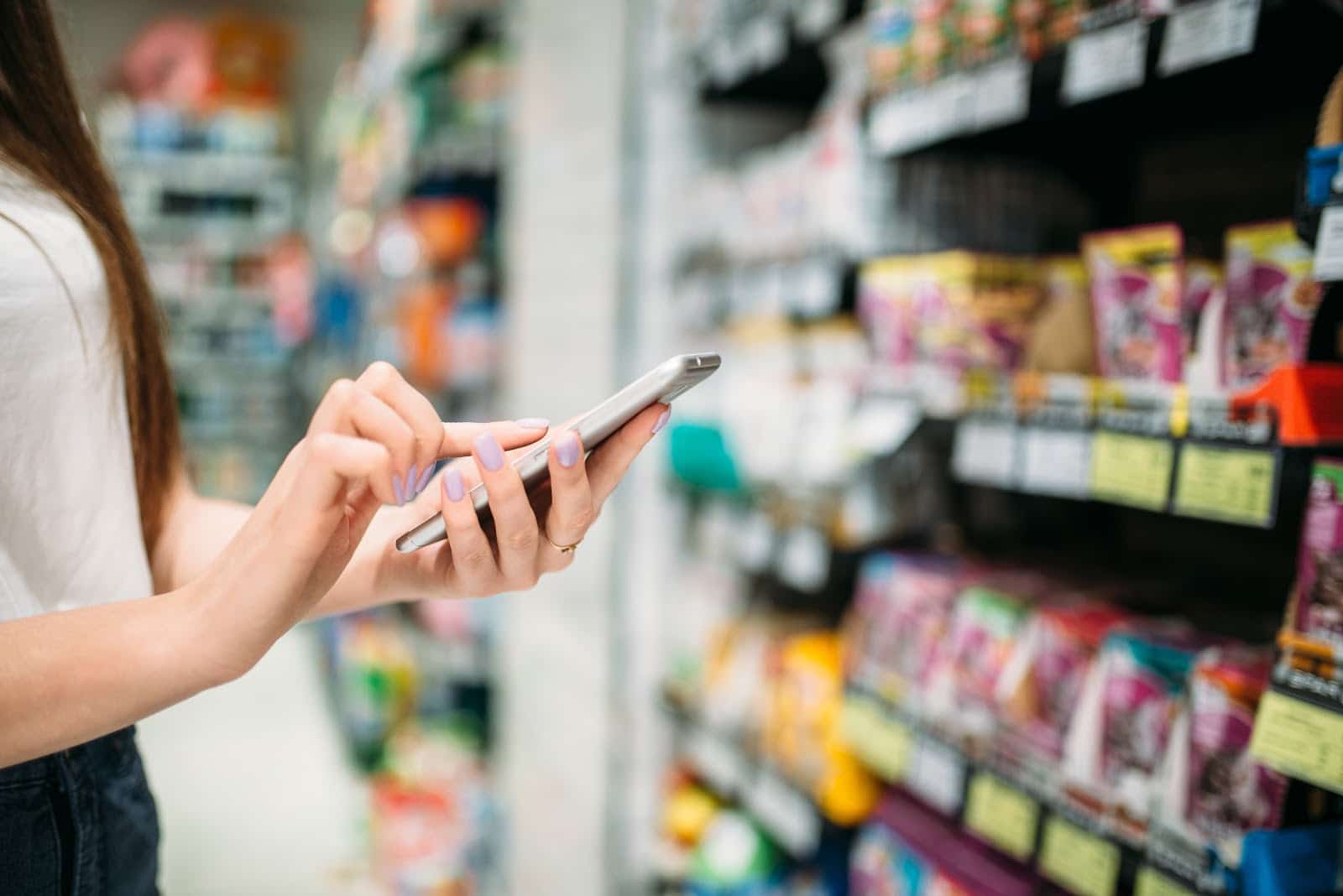
Shopper marketing is a broad term defined as last-minute efforts to influence a shopper’s behavior at the point of purchase. Continue reading “Shopper marketing: How mobile technology is transforming shopper engagement”
How to personalize the digital customer journey
Brands and retailers know how critical it is to put the customer first and offer some level of personalization. Continue reading “How to personalize the digital customer journey”
In-store marketing effectiveness: 4 proven case studies
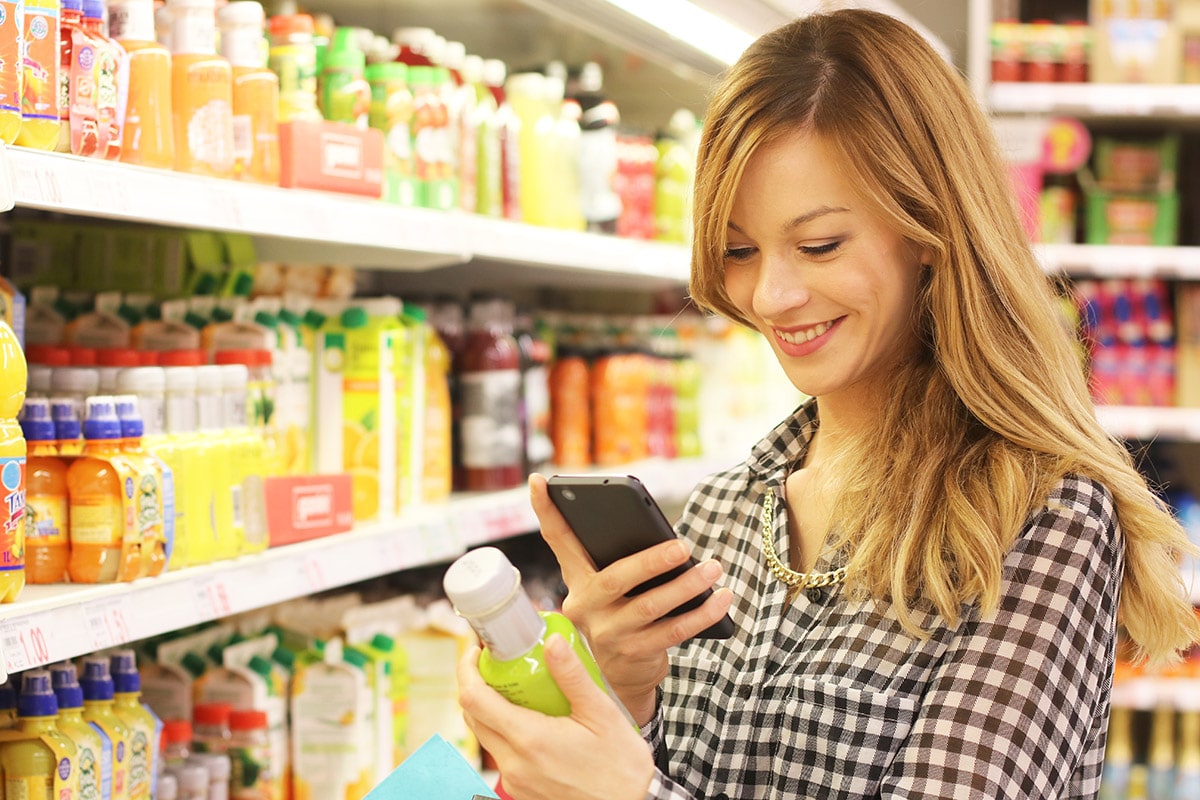
In-store marketing effectiveness: 4 proven case studies
- Greets each shopper upon entering the store
- Discusses the latest product news
- Directs and personally ushers shoppers to specific items in-aisle
- Answers questions
- Assists with purchase
This holistic customer experience is guaranteed to leave shoppers feeling satisfied and well cared for. Shopkick has the ability to deliver that same in-store marketing effectiveness in one convenient app, and partner with virtually any CPG brand or retailer. The loyalty program works by offering kicks (reward points) to mobile app users, which can later be redeemed for gift cards to popular retailers like Walmart, Target and Amazon, dining options like Starbucks, and even entertainment options like AMC, iTunes, and Hotels.com. Traditionally, brands have relied on end cap displays, in-aisle discounts, and coupons to capture the attention of shoppers upon their arrival to the store. However, these advertising tactics have become static and are increasingly ignored by customers. Worst of all, these methods force brands to slash prices, chipping away at their market value and profit margins. Shopkick incentivizes shoppers to actively interact with brands by rewarding them for their store visits, for scanning product barcodes in-aisle, browsing digital “lookbooks,” watching informative branded videos, and more. This method of rewarding customers for non-monetized activities successfully leads shoppers down the purchase funnel to a final point of sale, ultimately earning them lucrative bonus kicks.
- 84% of shoppers use mobile in-store.
- Digital displays are 2.5x more effective than static signs.
- Pre-shop research increases in-store spend by an average of 13%.
- 56% of customers want to see, touch, and interact with products in-person before buying.
Leading brands know they can’t expect to be marketplace leaders by using the same marketing strategies year after year. They must continually adapt, using the best available marketing stacks, tools, and resources. Continue reading to see how key CPG players like Claritin, Kraft, Barilla, and Georgia-Pacific partnered with Shopkick to educate, inspire, and boost their in-store marketing effectiveness.
Claritin
Claritin is the third-leading brand of over-the-counter allergy medication with over $238 million in annual sales. During peak allergy season, they needed a way to differentiate their products from direct competitors on Walmart shelves nationwide. Shopkick offered the brand a way to drive sales without damaging profit margins. First, educational in-app content drove brand and product awareness while shoppers were still at home, and encouraged shoppers to seek out the product during their next visit to Walmart. Once in store, Shopkick guided shoppers to shelf, and offered rewards for locating and scanning several products across Claritin’s brand portfolio. By offering rewards for engaging with the products at-shelf, and for purchasing Claritin over competitors in the crowded allergy aisle, many shoppers who hadn’t planned to purchase the product ended up with a box in their cart.

Campaign Goals
- Build Brand Awareness
- Drive Trial and Consideration
- Boost Sales
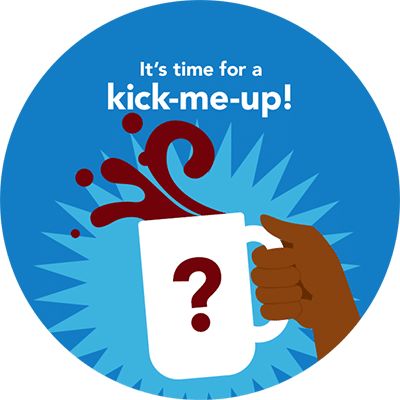
Shopkick Solution
- Provide Educational In-App Content
- Guide Shoppers to Product At-Shelf
- Reward Shoppers for Product Engagement
- Reward Shoppers Additional Points for Purchasing
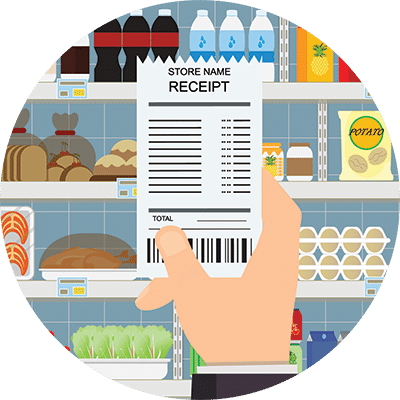
Results
- Over 28M campaign impressions
- 4:1 Return On Investment
- 59% Unplanned Incremental Sales
Kraft
Kraft® represents the third-largest food company in North America. The CPG brand was looking to increase sales of Baker’s Chocolate, Jell-O pudding, and JET-PUFFED marshmallows at Walmart during the busy holiday shopping season. With Shopkick, the brand was able to reach shoppers as they were planning their store shopping lists with holiday-inspired recipes and content, helping to boost awareness and purchase intent at home. Once in store, Shopkickers were sent on an gamified scavenger hunt through the store to find those three specific Kraft® products in-aisle. After earning reward points for scanning the product barcodes, many shoppers went on to purchase. By bundling these three products and offering heightened kicks for purchasing all three, Shopkick helped Kraft® boost incremental sales across multiple product lines.

Campaign Goals
- Build Brand Awareness
- Drive Trial and Consideration
- Boost Sales

Shopkick Solution
- Provide Educational In-App Content
- Cross-Promote Products
- Guide Shoppers to Products At-Shelf
- Reward Shoppers for Product Engagement
- Reward Shoppers Additional Points for Purchasing

Results
- Over 9M In-Store Engagements
- Over 18M Campaign Impressions
- 27% Conversion Rate
- 7:6.1 Return On Investment
- 55% Incremental Purchases
Barilla
Barilla enjoys notoriety as the world’s leading pasta maker, responsible for roughly 45% of the Italian and 25% of the American market share. Barilla partnered with Shopkick to boost the momentum of their new Pasta Pronto product launch, and differentiate the line from other Barilla products. Shopkick inspired shoppers at home by rewarding them for viewing in-app native video and lookbook content, which helped grow awareness and explained the unique benefits of the new product line. Shopkick users received additional rewards for locating Pasta Pronto in Target and Walmart stores nationwide. After scanning the product barcode and physically engaging with the new product in-aisle, shoppers converted at a high rate.

Campaign Goals
- Build Product Awareness
- Drive Trial
- Boost Sales

Shopkick Solution
- Provide Educational In-App Content
- Guide Shoppers to Product At-Shelf
- Reward Shoppers for Product Engagement
- Reward Shoppers Additional Points for Proof of Purchase

Results
- 66% Brand Awareness Increase
- 50% Conversion Rate
- 68% Lift in Future Purchase Intent
Georgia-Pacific
Georgia-Pacific operates under many household names, including Angel Soft, Quilted Northern, Brawny, and Dixie. The CPG brand partnered with Shopkick at the launch of their new Dixie Ultra Deep Dish Plates in hopes of building awareness, trial, and consideration across Walmart stores nationwide. Shopkick first introduced the new product through branded lookbook and video content at home. Once shoppers were in-store, Shopkick guided them to the paper goods aisle, and incentivized them to physically pick up the new product at-shelf. While the product was still in shoppers hands, Shopkick’s innovative post-scan video feature highlighted differentiating product details, increasing trial and consideration. Shopkick then went on to reward consumers with additional points for purchasing the product.

Campaign Goals
- Build Brand Awareness
- Drive Trial and Consideration
- Boost Sales

Shopkick Solution
- Provide Educational In-App Content
- Guide Shoppers to Product At-Shelf
- Use Post-Scan Video to Spotlight Product Features
- Reward Shoppers for Product Engagement and Purchase
- Offer Dynamic Kicks to Drive Sales

Results
- Over 16M Impressions Total
- 1.7M Impressions In-Store
- 99% Video Completion Rate
- 50% Incremental Purchase
Drive In-Store Marketing Effectiveness With a Proven Differentiator
Debbie Zefting, Barilla Director of Shopper Strategy and Engagement, said it best:
The results driven for Claritin, Kraft, Barilla, and Georgia-Pacific indicate the importance of reaching customers at each stage throughout the shopping journey, and implementing effective in-store marketing strategies. Shoppers have long held the technology we needed to reach them directly. With the widespread adoption of smartphones in recent years and the ever-growing desire to simplify life through helpful, interactive apps, Shopkick is the right solution at the right time. Shopkick is unique in the fact that it not only engages customers at home, but also on the go, in the store, and at the crucial point of decision-making. Best of all, Shopkick drives engagement and sales without coupons or discounts, allowing partners to drive sales at full price and preserve margins.
Shopkick is a popular mobile app that rewards shoppers for engagement with partnering brands, particularly at the point of purchase in-aisle. Shopkick is a powerful tool for in-store marketing effectiveness, helping brands surpass competitors. Contact us to see how easy it is to get started and achieve significant ROI.
CPG brand marketing: Building a brand identity that fosters loyalty
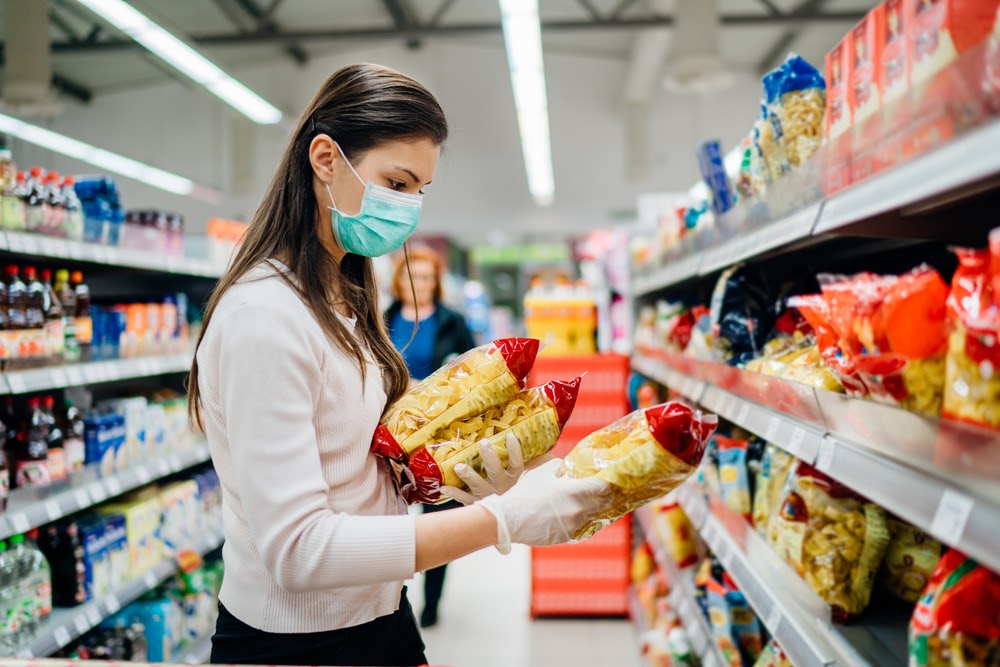
The CPG industry has seen a number of dramatic shifts over the past decade, with the digitization of many aspects of daily life and the rise of high-quality, private label brands.
Continue reading “CPG brand marketing: Building a brand identity that fosters loyalty”
How customer expectations in retail are changing amid the pandemic
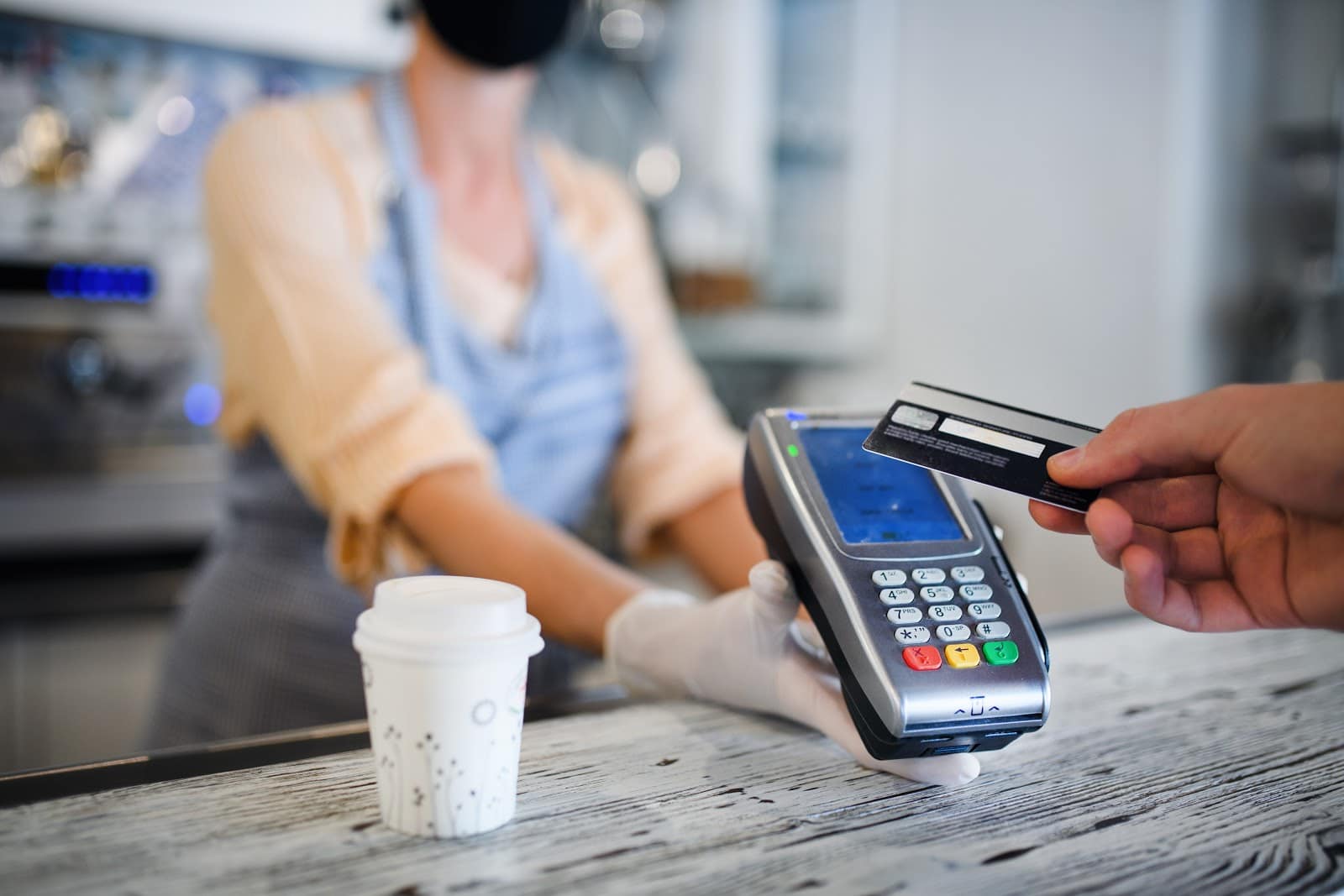
Although the coronavirus’ presence will likely diminish over time, its impact on the retail space and beyond could have everlasting effects. Continue reading “How customer expectations in retail are changing amid the pandemic”
How showrooming in retail increases product interaction and leads to sales
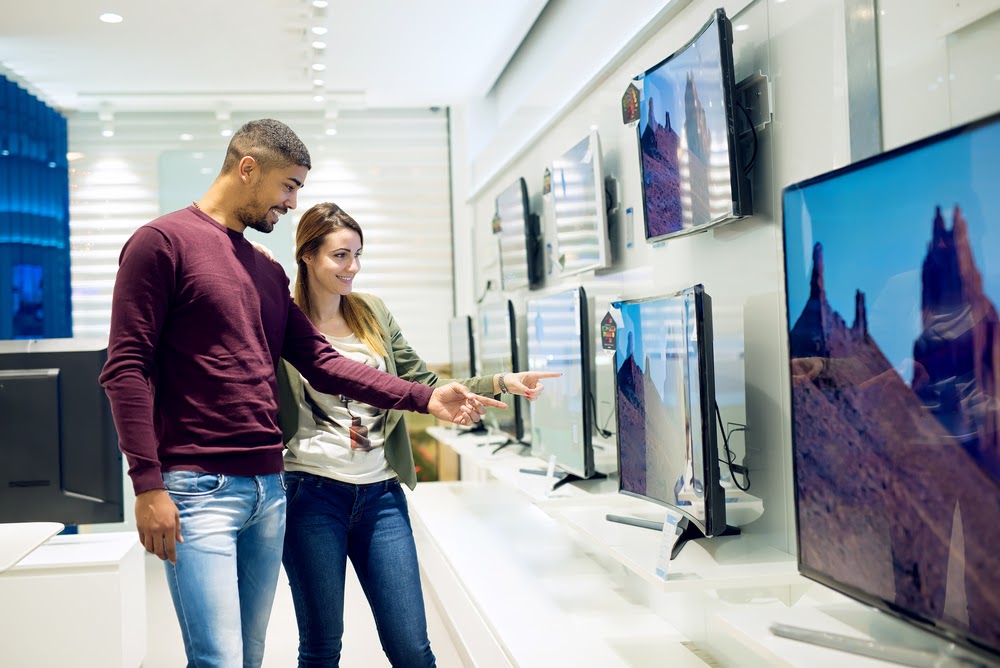
Showrooming in retail describes the process in which a consumer looks at a product in the store and then purchases it online, oftentimes at a lower price point. Continue reading “How showrooming in retail increases product interaction and leads to sales”

